Hotel Quarantine to Open on February 15th
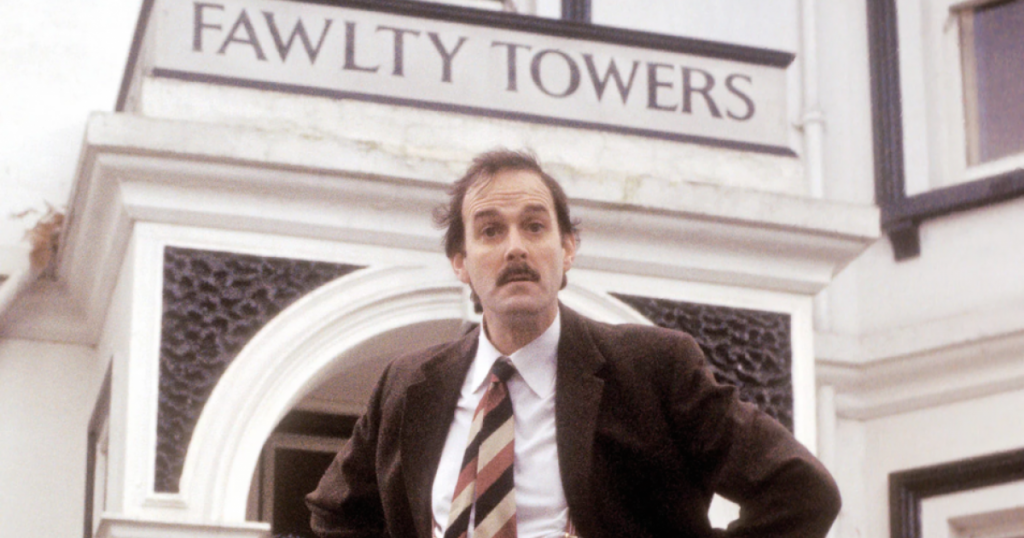
The UK is set to follow Australia and New Zealand within the next two weeks in requiring all UK residents to put themselves up in guarded quarantine hotels when returning from abroad. The BBC has the details.
UK residents returning from coronavirus hotspots abroad will have to quarantine in hotels from February 15th, Government sources have told the BBC.
Owners will be asked to provide accommodation for more than 1,000 new people every day, documents suggest. Passengers will have to stay in their rooms for 10 nights, with security guards accompanying them outside.
Labour called the measures “too little, too late” to deal properly with new overseas strains of Covid. “It is beyond comprehension that these measures won’t even start until February 15th,” said Shadow Home Secretary Nick Thomas-Symonds.
Speaking on BBC’s Question Time, Culture Secretary Oliver Dowden said the Government was “aiming to see” February 15th as the date new hotel quarantine plans for arrivals into the UK will be introduced.
Asked why it had taken so long to implement he said: “We want to make sure that we get this right so that when people go to those hotels, the hotels are in place, the transport is in place.”
The airports thought to be under consideration as locations for quarantine hotels are Heathrow, Gatwick, London City, Birmingham, Bristol, Manchester, Edinburgh, Glasgow and Aberdeen.
The rules are expected to apply to UK nationals and residents returning to the country from 30 “red list” COVID-19 hotspots, including several South American and African countries where new Covid variants have been detected in large numbers of people.
Travellers will have to foot the bill themselves, and they will be forcibly prevented from leaving by security personnel, who will accompany them on any periods outside of the room.
According to documents seen by the BBC, the Government wants quarantine hotels to be made “available on an exclusive basis”.
Guests will have three meals a day – hot or cold – in their rooms, with tea, coffee, fruit and water being available. Security will “accompany any of the arrived individuals to access outside space should they need to smoke or get fresh air”, one document says.
One hospitality industry source said the Government estimated the cost at about £80 per night per person. “If they are taking rooms for 1,425 passengers per night until March 31st, that is a bill of £55m,” they added.
Government sources confirmed to the BBC that travellers coming home will be expected to pay for the costs of their accommodation in quarantine hotels. Ministers are also likely to increase the fines for people who break the rules around quarantine.
No indication of an end point to these extraordinary measures, or what criteria will be used to decide when to lift them, has been given. If the Government has thought this through, they’re not letting on.
The Case Against Lockdown: A Reply to Christopher Snowdon
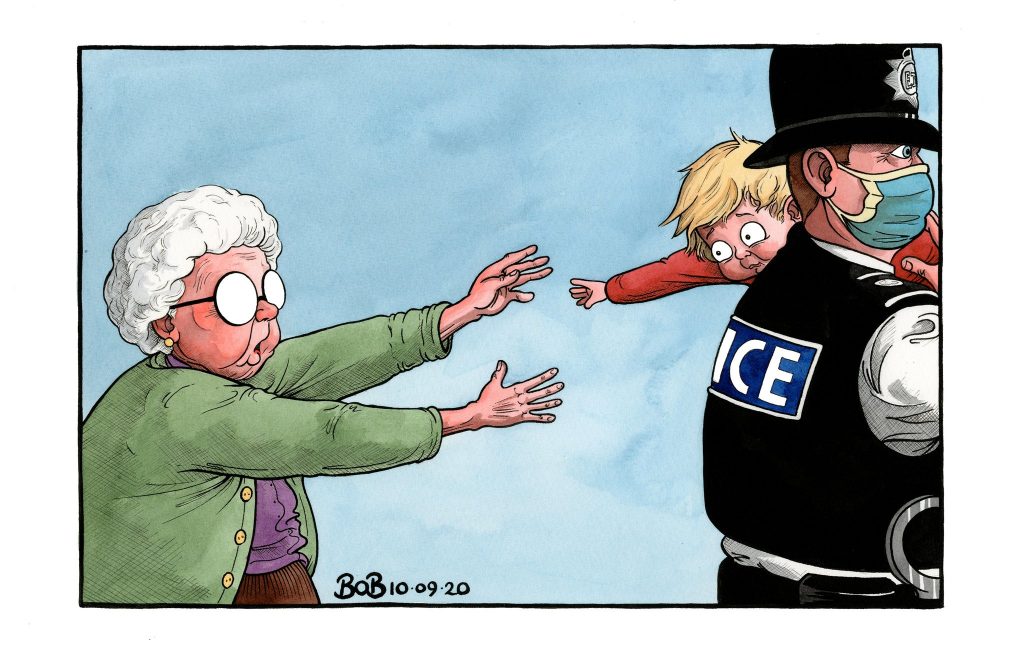
Toby has replied to Christopher Snowdon’s attack on lockdown sceptics. Like Snowdon’s piece, Toby’s article appears in Quillette, where Toby is employed as an Associate Editor. He doesn’t bother rebutting Snowdon’s detailed criticisms of Ivor Cummins and Dr Mike Yeadon because he doesn’t think the case against the lockdown policy stands or falls on whether their analysis is correct. I’ll let him explain.
We can quibble about the reliability of industrial-scale PCR testing, whether the “second wave” in Europe and America has been ameliorated by naturally acquired immunity and whether deaths due to other diseases have being wrongly classified as deaths due to novel coronavirus. But that is largely beside the point. Sceptics could concede all of Snowdon’s points—acknowledge that the threat posed by SARS-CoV-2 is every bit as grave as the most hard-line lockdowners say it is—without endangering the central limb of our argument. Our contention is that the whole panoply of non-pharmaceutical interventions (NPIs) that governments around the world have used to try and control the pandemic—closing schools and gyms, shutting non-essential shops, banning household mixing, restricting travel, telling people they can’t leave their homes without a reasonable excuse, etc.—have been largely ineffective.
Sure, there are some peer-reviewed studies published in reputable journals seeming to show that these measures reduce COVID-19 infections, hospital admissions, and deaths. (See here, for instance.) But most of these rely on epidemiological models that make unfalsifiable claims about how many people would have died if governments had just sat on their hands—and some of these models have been widely criticised. The evidence that lockdowns don’t work, by contrast, is not based on conjecture but on observing the effects of lockdowns in different countries. (You can review 30 of these studies here.) What these data seem to show is that the SARS-CoV-2 epidemic in each country rises and falls—and then rises and falls again, although less steeply as the virus moves towards endemic equilibrium—according to a similar pattern regardless of what NPIs governments impose.
The factors that affect a population’s vulnerability to the disease are things like distance from the equator, previous exposure to other coronaviruses, and genetics, not how nimble or smart their political leaders are. (Although the timely introduction of port-of-entry controls for visitors from China may have contributed to the low COVID mortality in some Asian and Oceanic countries.) If lockdowns work, you’d expect to see an inverse correlation between the severity of the NPIs a country puts in place and the number of COVID deaths per capita, but you don’t. On the contrary, deaths per million were actually lower in those US states that didn’t shut down than in those that did—at least in the first seven-and-a-half months of last year. Trying to explain away these inconvenient facts by factoring in any number of variables—average age, hours of sunlight, population density—doesn’t seem to help. There’s no signal in that noise.
Incidentally, Snowdon’s claim that the first British lockdown reduced COVID infections is easy to debunk. You just look at when deaths peaked in England and Wales—April 8th—go back three weeks, which is the estimated time from infection to death among the roughly one in 400 infected people who succumb to the disease, and you get to March 19th, indicating infections peaked five days before the lockdown was imposed. Even Chris Whitty, England’s Chief Medical Officer, acknowledged that the reproduction rate was falling before the first hammer came down.
By contrast, the evidence that the policy responses to the pandemic have caused—and will cause—catastrophic harm is pretty strong. Shutting schools causes significant harm to all children, but particularly to the least well-off. Telling people they’re not allowed to socialise—no restaurants, bars, or café, no festivals or sporting events—has contributed to a mental health crisis that has seen “deaths of despair” spike up. Closing non-essential businesses and ordering everyone to stay at home has caused jaw-dropping economic contractions—the UK economy shrunk by 20.8 percent in Q2 of 2020—that have sent unemployment soaring and triggered a global economic recession that the World Bank estimates pushed between 88–115 million people into extreme poverty last year, with the total expected to rise as high as 150 million in 2021. Governments across the world have mothballed huge swathes of their economies in a largely futile attempt to mitigate the impact of the virus, burdening future generations with unmanageable national debts.
Worth reading in full.
Inside the Zero Covid Cult

UnHerd‘s Freddie Sayers reports on the worrying growth in popularity and gathering strength of the Zero Covid cause.
As I discovered last week, the first rule of ZeroCovid Club is: do not talk about ZeroCovid Club. “ZeroCovid” is, after all, a term that elicits confusion and, sometimes, outright hostility. Perhaps that’s why, when leading members of the global ZeroCovid movement met for a three-day international conference last Wednesday, it had a far more innocuous title: the “Covid Community Action Summit”.
But even though this increasingly popular school of thought – which holds that we must not return to normal until the virus is completely eliminated within a country – wasn’t explicitly on the billing, its presence was made clear from the outset. In her introductory remarks, the moderator confirmed to the more than 600 registrants and speakers from across the world that “we are here to end Covid through ZeroCovid and CovidZero policies”. More often at the event, held over Zoom and organised by American scientist Yaneer Bar-Yam, speakers preferred to refer to ZeroCovid as an “elimination strategy”.
Yet the purpose of the event was clear: to share evidence and political advice to help campaigners lobby Western governments to abandon any notion of living alongside the virus, and instead to follow the lead of Asia-Pacific nations in aiming to eliminate the disease entirely within their borders. This group is crucially distinct from people who support ongoing lockdown measures to suppress the virus to a level where it is safe to reopen – for ZeroCovid believers, we cannot rest until that level is zero.
Extreme it may be, but it is no fringe movement.
Their advocates are among the most regular faces in broadcast media; Professor Devi Sridhar, one of its most outspoken advocates, has appeared on Channel 4 News 21 times during the pandemic – more than any other expert.
There’s a UK ZeroCovid chapter, which last month hosted its own well-attended online conference; the Scottish Government is committed to their campaign, alongside Independent SAGE, British trade unions and Labour MPs such as Jeremy Corbyn and Diane Abbott. Meanwhile, influential Tory MPs like Jeremy Hunt advocate a strategy of “zero infections and elimination of the disease” and routinely refer to the Asian model. Google search results in the UK and US for “ZeroCovid” are at an all-time high. The campaign has momentum.
Sayers spies the fatal flaw for any country that values its freedom.
ZeroCovid is a totalitarian aim, best delivered by a totalitarian state. Even in Australia, last weekend there was panic buying in Perth as the city re-entered lockdown in response to a single positive test result. So far at least, British voters have not chosen to reject liberal democracy, no matter what the epidemiological allure of a ZeroCovid regime.
For now, the British Government has resisted the campaign’s logic, and the Prime Minister continues to make encouraging signals about easing restrictions and even summer holidays. But as the impact of the vaccine is felt and the number of cases continues to fall, the politically difficult question of what constitutes an acceptable level of infection will have to be addressed.
Whatever that level is, expect well-spoken ZeroCovid campaigners to say it is too high. At each hesitant step towards opening up society, expect it to be called irresponsible and short-termist. No doubt ZeroCoviders sincerely believe their campaign for a Covid-free world is a noble one. But how successful they are at influencing policy will affect the shape of our society for years to come.
Worth reading in full.
Does a Single Dose of the Oxford Vaccine Really Cut Transmission by Two-Thirds?

Earlier this week there were excited reports that a single dose of the Oxford vaccine had been shown in trials to prevent “two-thirds of Covid transmissions”. In itself, this result would not be surprising, once you remember that asymptomatic infection is not a major driver of transmission, and the vaccine has been shown to reduce symptomatic infection. However, the study drew this conclusion, not because it accepted that premise, but because it maintained the opposite, namely, that asymptomatic infection is a major driver of transmission, and thus it claims to have shown that the vaccine reduces the incidence of asymptomatic infections.
We asked pathologist and regular contributor Dr Clare Craig to take a closer look at this study and have published her findings on the right-hand side. She was not impressed.
On February 1st the Oxford Vaccine Group published their latest findings on the Oxford/AstraZeneca vaccine. While the findings are encouraging, the way they have been interpreted is questionable. The study is underpowered for the conclusions that are being drawn from it and there has been extensive data mining undertaken retrospectively in an attempt to draw more powerful conclusions.
They concluded that in the vaccinated group two thirds fewer people were infected. Despite admitting that they did not study transmission, they still commented on it. The conclusions reached were the overall percentage testing positive was 54% lower “indicating the potential for a reduction of transmission”. The 54% figure was deduced from positivity including asymptomatic positives. This is not a reasonable conclusion to draw on two counts. They have assumed that asymptomatic positives are a major source of transmission and there is minimal evidence to support that assertion; and they failed to account for false positive test results.
Asymptomatic positives were looked for only in the UK participants. They have not stated how often these people were tested, but it can be inferred that they were tested 10 times each on a weekly basis for follow up from day 22 to day 90. That is 82,070 tests. A remarkably low false positive rate of 0.16% would be enough to account for the asymptomatic positives that they found. Repeat testing will only exclude false positives if a negative result is used to overrule a previous positive result. The criteria for calling a positive were not disclosed in the paper and it is assumed that a single PCR positive test was considered significant.
Instead of realising this there has been over-interpretation of the results.
The problem is that the results are all over the place, leaving no confidence in the research group’s conclusions.
Note that the difference between the two control groups in the symptomatic positives is significant – 2.7% infected vs 3.6% infected. If there is potential for that much difference between the control arms, then the impact of the difference between the control and vaccine arm has to be called into question. There does appear to be an effect of vaccination in the symptomatic group, but the effect is not as dramatic when considering that one control arm had a 25% reduction in symptomatic positives by chance alone.
For the asymptomatic positives, again, the difference between the two control arms – 2.2% vs 1.5% – is of the same order of magnitude as the difference it is claimed was due to the vaccine in the low dose arm – 1.2% vs 2.2%. Furthermore, when two standard doses were given, no difference was observed at all – 1.5% were asymptomatic positives in both control and vaccine arms.
How can the vaccine be having an impact if it is possible to find the same impact by randomly assigning people to two different control groups?
Worth reading in full.
Is the UK Complying With WHO Guidance on PCR Testing?
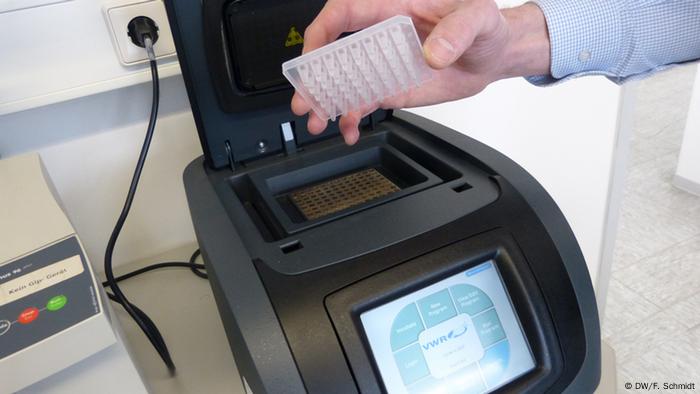
A Lockdown Sceptics reader wrote to his MP to ask whether the UK was complying with new WHO guidance, published in January, about how to use PCR tests correctly for COVID-19.
The MP put his questions to the House of Commons Library. The answer that came back was basically no, or rather, we leave it up to the labs to decide what to do. Here it is in full.
An article in the journal Science explains the cycle threshold in the following way:
“Standard tests identify SARS-CoV-2 infections by isolating and amplifying viral RNA using a procedure known as the polymerase chain reaction (PCR), which relies on multiple cycles of amplification to produce a detectable amount of RNA. The CT value is the number of cycles necessary to spot the virus; PCR machines stop running at that point. If a positive signal isn’t seen after 37 to 40 cycles, the test is negative (see “One number could help reveal how infectious a COVID-19 patient is. Should test results include it?“, Science, September 29th 2020)“
The cycle threshold (Ct) value can broadly tell you the concentration of “viral genetic material” in a patient sample following testing by RT-PCR. The Public Health England (PHE) publication on Understanding cycle threshold (Ct) in SARS-CoV-2 RT-PCR (October 2020) explains that:
“A low Ct indicates a high concentration of viral genetic material, which is typically associated with high risk of infectivity.
“A high Ct indicates a low concentration of viral genetic material which is typically associated with a lower risk of infectivity. In the context of an upper respiratory tract sample a high Ct may also represent scenarios where a higher risk of infection remains – for example, early infection, inadequately collected or degraded sample.
“A single Ct value in the absence of clinical context cannot be relied upon for decision making about a person’s infectivity.“
The Library is not in a position to know if the laboratories across the UK that are processing COVID-19 tests are providing information on Ct values to a central point (such as Departments of Health across the devolved administrations, Test and Trace in England); I cannot see that there is information publicly available detailing how each laboratory runs its PCR machines.
There is, however, more general information about Cycle Thresholds published by PHE. Its publication on Understanding cycle threshold (Ct) in SARS-CoV-2 RT-PCR explains that there are “many different SARS-CoV-2 RT-PCR assays/platforms in use across the UK” and that “each assay will have a slightly different limit of detection (LoD) – the lowest concentration of virus that can be reliably and consistently detected by the assay”.
The document goes on to caution against directly comparing cycle threshold values:
“Ct [cycle threshold] values cannot be directly compared between assays of different types due to variation in the sensitivity (limit of detection), chemistry of reagents, gene targets, cycle parameters, analytical interpretive methods, sample preparation and extraction techniques (p7). The same document states that ‘a typical RT-PCR assay will have a maximum of 40 thermal cycles’ (see p6). Further background on cycle threshold values can be found on pages 3 & 6 of the PHE document.“
Separate guidance published by PHE states that “All laboratories should determine the threshold for a positive result at the limit of detection based on the in-use assay” (PHE, “Research and analysis: Assurance of SARS-CoV-2 RNA positive results during periods of low prevalence“, Updated October 16th 2020).
Wales
Regarding the situation in Wales, the Welsh Parliament Research Service has produced a briefing on PCR testing in response to a petition considered by the Petitions Committee on “Abandon the rt-PCR test for covid-19 testing as its unfit for purpose” (see Welsh Parliament Research Service “Testing for COVID-19 using the rt-PCR test“, December 15th 2020). This notes that:
“The TAC report on the RT-PCR test confirmed (p.10) that multiple platforms (representing equipment from different manufacturers) were being used by Public Health Wales (PHW) to support the testing regime. In terms of the number of amplification cycles involved in RT-PCR, PHW responses to Freedom of Information requests (FOI 451 and FOI 461) indicate that: The real-time PCR assays in use in Wales for COVID-19 diagnostics all run for 45 cycles however, the cycle number where the sample is defined as RNA NOT DETECTED varies by platform and target gene detected by the system. This is defined by the manufacturer.“
Asymptomatic testing
The constituent also asked if those who are asymptomatic and receive a positive COVID-19 result are retested. I cannot see anything suggesting that those who are asymptomatic, and are tested using the RT-PCR test, would be retested on receipt of a positive result. There is guidance, however, that those who are asymptomatic and receive a positive result after using a lateral flow test would be required/offered to have a PCR test to confirm the result (see, for example, Birmingham City Council, “Covid-19 lateral flow device (LFD) testing information“, not dated).
Tribute to a Father
Lockdown Sceptics reader Andy Smith has written to tell us the sad story of his dad’s death on Wednesday.
I gave these low grade politicians the benefit of the doubt with their initial three week lock down, in the face of “a new virus”, to “flatten the sombrero and save the NHS from being overrun”. In my mind, a stated incubation period of up to 14 days should have seen seen the methodology of a three week lockdown vindicated. As soon as Johnson and his henchmen continued the lockdown, without evidence to substantiate it, it became obvious to me that we were being governed by the equivalent of a bunch of double glazing salesmen, dating back to the 1970s (apologies to those guys) who refused to leave your home without a pressurised sale.
My dad: Herbert Bruce Smith –“Bruce” to everyone – was taken by ambulance from his home just outside Norwich to the Norfolk and Norwich Hospital on January 11th with a suspected water infection (diagnosed by the ambulance crew). Upon being admitted to hospital we (my mum Janet, my sister Wendy and I) were horrified that he had been put in a Covid ward being suspected of having the virus. Two days later his test came back negative and he was moved out of the Covid ward into his own room.
He was expected to return home on January 21st but was refused as he had now tested positive for Covid – obviously caught in hospital. I would stress here that I do not blame the hospital. I blame Johnson and Hancock for the way they are governing the NHS and I hope I live long enough to see their day of reckoning when the world regains its common sense.
Bruce was subsequently transferred to Dereham hospital. I am in Costa Rica, Wendy is currently self-isolating in Norwich having tested positive for the virus and my mum was allowed access to my dad’s bedside. We had a family video conference call on the morning of February 2nd. It was harrowing because it is a memory of my dad that is not consistent with his life and it is one that my mum, Wendy and I will replace in our minds with much better ones over time.
Today, February 3rd, Bruce (husband of my mum for 68 years and our dad) died. What world are we living in where travel and quarantine restrictions do not allow me to return home and be together with my my mum and my sister to say goodbye to a wonderful man?
My initial observation is that my dad will have contributed to Hancock’s statistics twice, firstly testing positive in hospital and secondly his death certificate will, I am sure, record the virus as the cause of death.
Like many families, I do not want my father to become another Government statistic, so I hope you publish this as a tribute not only to “Bruce” but to all the other expendable casualties.
Spot the Pandemic Year

Can the Government Force You to Be Tested?
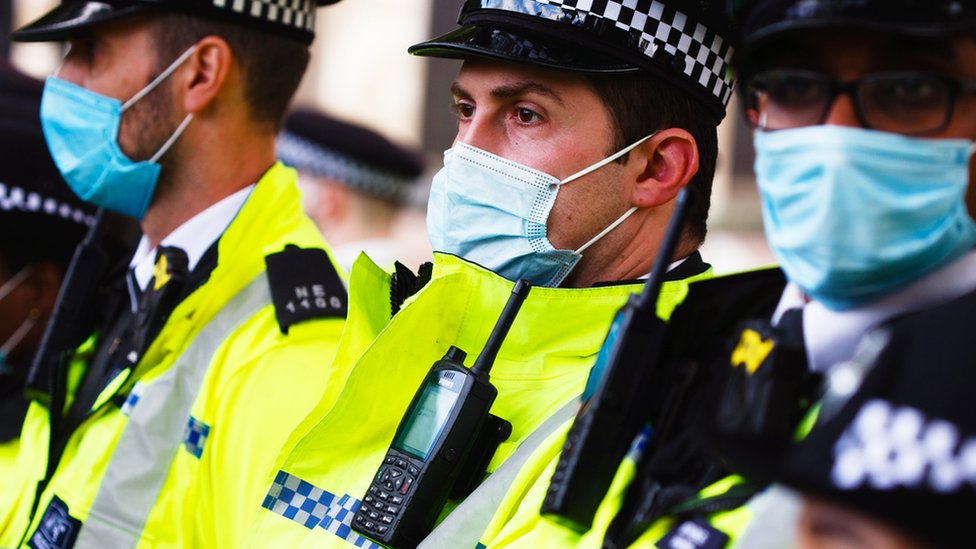
There follows a guest post by Dr John Fanning, Senior Lecturer in Tort law at the University of Liverpool, addressing the worrying prospect of forced testing for COVID-19.
The Department of Health announced this week that it will deploy door-to-door “surge testing” in parts of England to “monitor and suppress” the spread of the South African variant of COVID-19. This “testing blitz” will apply in Bristol and Liverpool and in specified postcode areas in the East of England (EN10), London (W7, N17, CR4), the North West (PR9), the South East (ME15 and GU21) and the West Midlands (WS2). Residents over the age of 16 in these target areas will be asked to take a COVID test, regardless of whether they have symptoms. Liverpool’s return to the naughty step is particularly irksome: it is the second time in three months that the city has hosted a mass asymptomatic testing programme. Last time, the results cast doubt on claims that the city had a serious problem: of the 108,304 asymptomatic people tested in Liverpool between November 6th and 26th 2020, 703 tested positive for COVID-19 – or 0.6%. This time, health officials in Liverpool and in other “surge” areas will ask residents to take a test, perhaps even on their doorstep, to “come down hard” on the new variant.
All this raises an interesting question: if a health official knocks on your door, do you have to be tested? As things stand, it doesn’t appear so. In general, anyone who “inflicts” unlawful force on another person commits the tort of battery (Collins v Wilcock [1984] 1 WLR 1172), sometimes also known as a “trespass”. Any form of bodily contact exceeding the jostling of (normal) everyday life will qualify as a trespass; e.g. a punch in the face, an unwanted kiss, a swab forced up the nose, and so on. What makes the “infliction” of force lawful is the presence of the other person’s consent. This is why a doctor must be sure that she/he has a patient’s consent before beginning a medical examination or administering treatment – without it, she/he will be acting unlawfully. In spite of the Health Secretary’s gung-ho rhetoric and the impression cultivated by the media, the mass testing programme seems ultimately to rely on the consent of its participants: the Department of Health “strongly encourages” people in the target areas to participate and talks of tests being “offered” to those who must leave their homes for essential reasons. The Government evidently prefers the ‘carrot’ approach, perhaps fearing the optics of a scheme buttressed by compulsion. Mercifully, the prospect of being wrestled to the ground as a local authority functionary forces a swab down your throat remains – at least for now – the stuff of libertarian nightmares.
The problem is that the Government does have a “big stick” at its disposal in the form of the Coronavirus Act 2020. Schedule 21 to that Act contains powers that the state can deploy against “potentially infectious persons”; i.e., those who are, or may be, infected or contaminated with coronavirus and who might therefore infect or contaminate others – which, during a global pandemic, could be just about anyone. Where a public health officer or a police constable considers it “necessary and proportionate” in the interests of the person, for the protection of others, or for the maintenance of public health, she/he can deploy the powers under Schedule 21. These include the power to remove a potentially infectious person to a place for “suitable screening and assessment” (para.6), to hold that person at that place for up to 48 hours (if held by a public health officer) (para.9) or for renewable 24-hour periods (if held by a police constable) (para.13), to require that person to provide a biological sample (para.10), and, in the event of a positive test result, to detain that person for up to 14 days (paras. 14 and 15). A failure to comply without reasonable excuse with these requirements will constitute a criminal offence (para. 23).
As far as I can tell, none of these Schedule 21 powers has been invoked in England – they are, if you like, “plugged in” but the Health Secretary is yet to switch them on. If they were engaged, however, a person who refused to submit to a doorstep test could potentially be arrested, taken to a suitable facility, and required by law to undergo COVID-19 testing. The imagery this evokes is utterly chilling; the Coronavirus Act is like a dystopian fantasy in statutory form. There are few laws on the books that can rival it. I suspect only the Mental Health Act 1983 – which allows doctors to detain persons with mental disorders and forcibly treat them in hospital – could be said, pound for pound, to be more coercive. This raises an interesting question about why the Government believed that such a high degree of coercion was necessary in the first place. The Public Health (Control of Disease) Act 1984, enacted with outbreaks of “notifiable” diseases like anthrax, plague and smallpox in mind, makes its powers to remove, isolate and detain infectious people contingent upon a magistrate’s warrant. What is it about COVID-19 that justified a more robust legislative response than that afforded to smallpox? Why are the liberties of a person suffering from a disease with a 30% mortality rate afforded greater protection by the law than those of a person with an illness that kills only around 1% of the people it infects? Schedule 21 reveals much about the government’s bizarre calculus as it butted the Coronavirus Bill through Parliament in those mad March days.
Sceptics Under Fire

Spectator Editor Fraser Nelson – himself a lockdown supporter – has come to the defence of sceptics in their struggle against Witch-Finder General Neil O’Brien MP in his Telegraph column this week.
Covid is distinguished by how little we still know about it, how even the greatest experts can be confounded. This time last year, experts on the SAGE committee were unanimous in advising against a Wuhan-style lockdown. China had been foolish, said its memo: it was “a near certainty” that a second peak would strike once it unlocked. This did not happen. Jonathan Van-Tam and others rubbished the need for face masks, which are now mandatory. This is not to question any of their credentials: it was a new and fast-moving situation that wrong-footed everyone. Myself very much included.
But rather than emphasise the need to be open-minded, and consider all new angles, we somehow reached a situation where faith in lockdown is complete – and those who question its efficacy are disparaged. This shift is embodied by the behaviour of Neil O’Brien, a think tank chief turned Tory MP, who over the summer started using social media to highlight claims made by critics of lockdown. He applied his forensic mind to the pursuit of errors, and started to acquire quite a following.
But this all mutated into a targeting of academics who had been effectively – and accurately – criticising aspects of lockdown. With some like-minded others, O’Brien created a website listing the offenders and their wrongthink. A new label was applied to the bloggers, journalists and professors: “Covid sceptics”.
One is Carl Heneghan, Professor of Evidence-Based Medicine at Oxford University, who balances his academic work with weekend work as an urgent care NHS doctor. When Heneghan spotted flaws in calculating Covid deaths, it led to a change in Government policy. Yet this world-class academic, who in his spare time sees elderly patients suffering from Covid, has found himself denounced.
A few months ago, Heneghan was being consulted by the Prime Minister – who wanted him to test the arguments of the (many) lockdown advocates in Government. Also invited was Sunetra Gupta, a Professor of Theoretical Epidemiology at Oxford and an energetic critic of lockdown. She now joins Prof Heneghan on the official list of heretics, pilloried on a website whose various sponsors include a well-regarded Tory MP tipped for promotion. It’s all very odd.
Ministers don’t appear to mind the heretic-hunting one bit. When O’Brien’s efforts were hailed as “fantastic” by Jacob Rees-Mogg, Leader of the Commons, it started to look like a semi-authorised campaign against Government critics. It can even claim to be an effective campaign, insofar as the academics in its sights do seem to have taken a lower profile.
The professors might be talking the most appalling rot – or they might come to be completely vindicated. But what matters, and what we’re losing, is the upholding of rigorous debate. The point of Parliament is to talk, hence the name. But when parliamentarians seek to close down discussion (O’Brien has said he won’t debate Heneghan so as not to give him “the publicity”), then it marks a deeply worrying turn.
Worth reading in full.
Round-up
- “Boris Johnson ‘over-cautious’ in keeping schools shut until March 8th” – SAGE member Professor Robert Dingwall breaks ranks to tell the Telegraph: “It’s very hard to resist the conclusion that the English are being a little over-cautious this time. If you have the first three years of primary coming back immediately after half term that is not now going to create an explosive third wave.”
- “Households should be allowed to mix again NEXT MONTH, expert says” – Another pro-reopening scientist, Professor Paul Hunter, as reported in the Sun
- “Tomorrow will be a good day” – In the latest episode of the Telegraph‘s Planet Normal podcast Allison and Liam speak to Rod Grant, Headteacher of Clifton Hall School, who says he’s more concerned now than he’s ever been in his 30 years in the classroom about the effect the pandemic is having on children’s mental health
- “Can we boost immunity with the vaccines we have now?” – Ross Clark in the Spectator on the new Oxford University study that is recruiting 820 volunteers to receive mixed doses of different vaccines to see if this will improve the efficacy. Question is, how can a study of 820 people achieve statistically significant results? Why are the doses only being spaced by two weeks when studies have suggested longer is better? Does the Government care?
- “Proof the peak HAS passed: Daily deaths drop to 915 and cases to 20,634 – down 30% from last week – as all but THREE local authorities in England see Covid infections fall and pressure on NHS intensive care units finally eases” – More good news in the Mail
- “Even with vaccines, an unreformed NHS may force us back into lockdown” – Sherelle Jacobs in the Telegraph with more cracking analysis: “The bottom line is that the NHS has broken under the weight of our expectations. Thus, further winter lockdowns remain a serious possibility”
- “Covid and Kids: The Evidence” – The Swiss Doctor with a characteristically comprehensive and concise rundown of the facts and studies
- “Seven indicators that show infections were falling before Lockdown 3.0” – HART member Professor David Paton in the Critic with a thorough summary of the evidence
- “Sweden to develop ‘vaccination passports’ that allow you to travel and meet friends” – Depressing report in the Telegraph of the country that prized liberty in 2020 apparently turning its back on it in 2021
- “Weaknesses in the Covid data” – In the latest episode of the Pandemic Podcast, Andy is joined by Emily Barley, co-founder of the Covid Data Dashboard
- “A good citizen or a badass. How to choose” – Antonia Rolls ponders what really makes a good citizen in Covid land
- “Why schools must open – and stay open” – Tim Black in spiked says we need to treat schools as we do hospitals and supermarkets – too important to do without
- “Flawed democracy” – Strong leader article in Spectator Australia coming to the defence of Liberal backbencher Craig Kelly and his opposition to masks and support for Covid treatments such as HCQ and ivermectin
- “WHO team in Wuhan sees data ‘no one has seen before’ – and does not rule out coronavirus escaped from a lab” – Sky News update on the investigations into the virus’s origin
- “Macron’s Lockdown Conundrum Will Decide France’s Recession Fate” – To lock down or not to lock down, that is the question, says William Horobin in Bloomberg
- “The Cost of Lockdown” – New site cataloguing the collateral damage
- “Israel’s rapid rollout provides the first real-world proof that COVID vaccination works as well as promised” – Despite current high infection levels, a large-scale investigation of 163,000 people finds that those not vaccinated were 11 times more likely to test positive than those vaccinated, Yahoo! News reports
- “The impact of national non-pharmaceutical interventions (‘lockdowns’) on the presentation of cancer patients” – New peer-reviewed study in ecancer that finds an 18.2% reduction in new cancer diagnoses (987 cancers) in 2020 compared with 2019, particularly prostate (51.4%), gynaecological (29.7%), breast (29.5%) and lung (23.4%) cancers
- “Why I refused to clap for Captain Tom” – Beverley Turner in the Mail says she finds it it impossible to view the events surrounding the centenarian’s latter days “without looking through the prism of COVID-19, the Government’s response to it and the various ways in which our country has been manipulated and controlled with no clear metrics to escaping lockdowns”
- “The nonsense of ‘unessential work’” – Michael Curzon in Bournbrook on a very dubious distinction
- Life has returned to normal in the Isle of Man, save for the fact that visitors from the mainland aren’t allowed
Theme Tunes Suggested by Readers
Three today: “Boy in a bubble” by Paul Simon, “Let Us Out” by Marble Statues and “What the world is waiting for” by the Stone Roses.
Love in the Time of Covid

We have created some Lockdown Sceptics Forums, including a dating forum called “Love in a Covid Climate” that has attracted a bit of attention. We have a team of moderators in place to remove spam and deal with the trolls, but sometimes it takes a little while so please bear with us. You have to register to use the Forums as well as post comments below the line, but that should just be a one-time thing. Any problems, email Lockdown Sceptics here.
Sharing Stories
Some of you have asked how to link to particular stories on Lockdown Sceptics so you can share it. To do that, click on the headline of a particular story and a link symbol will appear on the right-hand side of the headline. Click on the link and the URL of your page will switch to the URL of that particular story. You can then copy that URL and either email it to your friends or post it on social media. Please do share the stories.
Social Media Accounts
You can follow Lockdown Sceptics on our social media accounts which are updated throughout the day. To follow us on Facebook, click here; to follow us on Twitter, click here; to follow us on Instagram, click here; to follow us on Parler, click here; and to follow us on MeWe, click here.
Woke Gobbledegook

We’ve decided to create a permanent slot down here for woke gobbledegook. Today, we bring you the story of Jess Krug, the white professor who posed as black for years, until she came clean last autumn. The Washingtonian has the story.
“I am a coward.” Jessica Krug’s confession started ricocheting across screens one brutally muggy afternoon in late-summer Washington. “For the better part of my adult life,” it began, “every move I’ve made, every relationship I’ve formed, has been rooted in the napalm toxic soil of lies.” Krug, a faculty member at George Washington University, had taken to Medium, the online forum, to reveal a stunning fabrication. Throughout her entire career in academia, the professor of African history – a white woman – had been posing as Black and Latina.
“I have thought about ending these lies many times over many years, but my cowardice was always more powerful than my ethics. I know right from wrong. I know history. I know power. I am a coward,” she wrote. “You should absolutely cancel me, and I absolutely cancel myself.”
The statement, posted September 3rd, 2020, went viral immediately, unleashing a tidal wave of Oh, my Gods across the text chains of Krug’s GW colleagues and other academics. “We were all blindsided,” says GW history-department chair Daniel Schwartz. Distraught emails from Krug’s students – less than a week into a virtual semester already upended by the coronavirus pandemic – began piling up in faculty in-boxes. Meanwhile, an online mob went to work churning up old photos of Krug and tanking the Amazon ratings of her book. By the end of the day, a now-infamous video of Krug calling herself “Jess La Bombalera” and speaking in a D-list imitation Bronx accent was all over the internet.
The next morning, Schwartz convened an emergency staff meeting on Zoom. The initial shock of their colleague’s revelation had quickly given way to anger, and now the GW professors who logged on were unanimous: The department should demand Krug’s resignation right away. If she refused, they’d call for the university to rescind her tenure and fire her. That afternoon, they issued their ultimatum in a public statement. Five days later, Krug quit.
It was a dizzyingly fast fall for a woman who’d been among the most promising young scholars in her field. The 38-year-old had a PhD from one of the nation’s most prestigious African-history programs. She’d been a fellow at New York’s famed Schomburg Center, done research on three continents, and garnered wide praise for her book. She’d achieved all of it, as far as her GW colleagues knew, despite an upbringing that was nothing short of tragic. As Krug told it, she’d been raised in the Bronx, in “the hood.” Her Puerto Rican mother was a drug addict and abusive.
The tale was just the latest version of one Krug had been evolving for more than 15 years, swapping varied, gruesome particulars into the made-up backstory (a rape, a paternal abandonment) for different audiences. It was a heart-tugger – and, it turns out, incredibly flimsy. Minimal online sleuthing would have unravelled any of the lies in minutes—something Krug, who was still an undergrad when Facebook debuted, surely knew. But she’d also learned that the harrowing history she’d crafted was a useful line of defence against the kind of probing that could have easily exposed her. After all, who wanted to pry into such a delicate situation?
“To everyone who trusted me, who fought for me, who vouched for me, who loved me, who is feeling shock and betrayal and rage and bone marrow deep hurt and confusion, violation in this world and beyond: I beg you, please, do not question your own judgment or doubt yourself,” Krug wrote in her confession. “You were not naive. I was audaciously deceptive.”
Worth reading in full.
“Mask Exempt” Lanyards

We’ve created a one-stop shop down here for people who want to obtain a “Mask Exempt” lanyard/card – because wearing a mask causes them “severe distress”, for instance. You can print out and laminate a fairly standard one for free here and the Government has instructions on how to download an official “Mask Exempt” notice to put on your phone here. And if you feel obliged to wear a mask but want to signal your disapproval of having to do so, you can get a “sexy world” mask with the Swedish flag on it here.
A reader has started a website that contains some useful guidance about how you can claim legal exemption. Another reader has created an Android app which displays “I am exempt from wearing a face mask” on your phone. Only 99p.
If you’re a shop owner and you want to let your customers know you will not be insisting on face masks or asking them what their reasons for exemption are, you can download a friendly sign to stick in your window here.
And here’s an excellent piece about the ineffectiveness of masks by a Roger W. Koops, who has a doctorate in organic chemistry. See also the Swiss Doctor’s thorough review of the scientific evidence here and Prof Carl Heneghan and Dr Tom Jefferson’s Spectator article about the Danish mask study here.
The Great Barrington Declaration
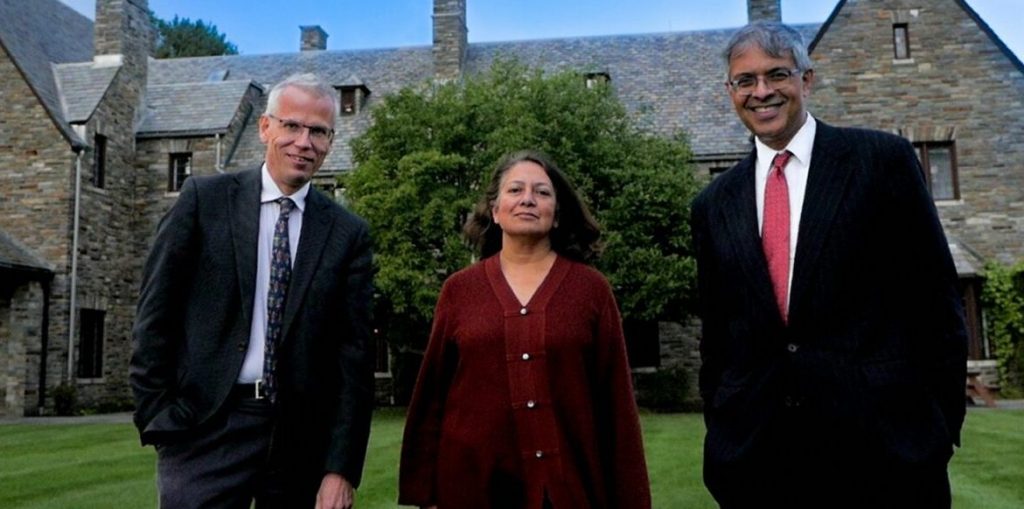
The Great Barrington Declaration, a petition started by Professor Martin Kulldorff, Professor Sunetra Gupta and Professor Jay Bhattacharya calling for a strategy of “Focused Protection” (protect the elderly and the vulnerable and let everyone else get on with life), was launched in October and the lockdown zealots have been doing their best to discredit it ever since. If you googled it a week after launch, the top hits were three smear pieces from the Guardian, including: “Herd immunity letter signed by fake experts including ‘Dr Johnny Bananas’.” (Freddie Sayers at UnHerd warned us about this the day before it appeared.) On the bright side, Google UK has stopped shadow banning it, so the actual Declaration now tops the search results – and Toby’s Spectator piece about the attempt to suppress it is among the top hits – although discussion of it has been censored by Reddit. The reason the zealots hate it, of course, is that it gives the lie to their claim that “the science” only supports their strategy. These three scientists are every bit as eminent – more eminent – than the pro-lockdown fanatics so expect no let up in the attacks. (Wikipedia has also done a smear job.)
You can find it here. Please sign it. Now over three quarters of a million signatures.
Update: The authors of the GBD have expanded the FAQs to deal with some of the arguments and smears that have been made against their proposal. Worth reading in full.
Update 2: Many of the signatories of the Great Barrington Declaration are involved with new UK anti-lockdown campaign Recovery. Find out more and join here.
Update 3: You can watch Sunetra Gupta set out the case for “Focused Protection” here and Jay Bhattacharya make it here.
Update 4: The three GBD authors plus Prof Carl Heneghan of CEBM have launched a new website collateralglobal.org, “a global repository for research into the collateral effects of the COVID-19 lockdown measures”. Follow Collateral Global on Twitter here. Sign up to the newsletter here.
Judicial Reviews Against the Government

There are now so many legal cases being brought against the Government and its ministers we thought we’d include them all in one place down here.
The Simon Dolan case has now reached the end of the road. The current lead case is the Robin Tilbrook case which challenges whether the Lockdown Regulations are constitutional. You can read about that and contribute here.
Then there’s John’s Campaign which is focused specifically on care homes. Find out more about that here.
There’s the GoodLawProject and Runnymede Trust’s Judicial Review of the Government’s award of lucrative PPE contracts to various private companies. You can find out more about that here and contribute to the crowdfunder here.
Scottish Church leaders from a range of Christian denominations have launched legal action, supported by the Christian Legal Centre against the Scottish Government’s attempt to close churches in Scotland for the first time since the the Stuart kings in the 17th century. The church leaders emphasised it is a disproportionate step, and one which has serious implications for freedom of religion.” Further information available here.
There’s the class action lawsuit being brought by Dr Reiner Fuellmich and his team in various countries against “the manufacturers and sellers of the defective product, PCR tests”. Dr Fuellmich explains the lawsuit in this video. Dr Fuellmich has also served cease and desist papers on Professor Christian Drosten, co-author of the Corman-Drosten paper which was the first and WHO-recommended PCR protocol for detection of SARS-CoV-2. That paper, which was pivotal to the roll out of mass PCR testing, was submitted to the journal Eurosurveillance on January 21st and accepted following peer review on January 22nd. The paper has been critically reviewed here by Pieter Borger and colleagues, who have also submitted a retraction request. UPDATE: The retraction request was rejected yesterday.
And last but not least there was the Free Speech Union‘s challenge to Ofcom over its ‘coronavirus guidance’. A High Court judge refused permission for the FSU’s judicial review on December 9th and the FSU has decided not to appeal the decision because Ofcom has conceded most of the points it was making. Check here for details.
Samaritans

If you are struggling to cope, please call Samaritans for free on 116 123 (UK and ROI), email jo@samaritans.org or visit the Samaritans website to find details of your nearest branch. Samaritans is available round the clock, every single day of the year, providing a safe place for anyone struggling to cope, whoever they are, however they feel, whatever life has done to them.
Shameless Begging Bit
Thanks as always to those of you who made a donation in the past 24 hours to pay for the upkeep of this site. Doing these daily updates is hard work (although we have help from lots of people, mainly in the form of readers sending us stories and links). If you feel like donating, please click here. And if you want to flag up any stories or links we should include in future updates, email us here. (Don’t assume we’ll pick them up in the comments.)
And Finally…
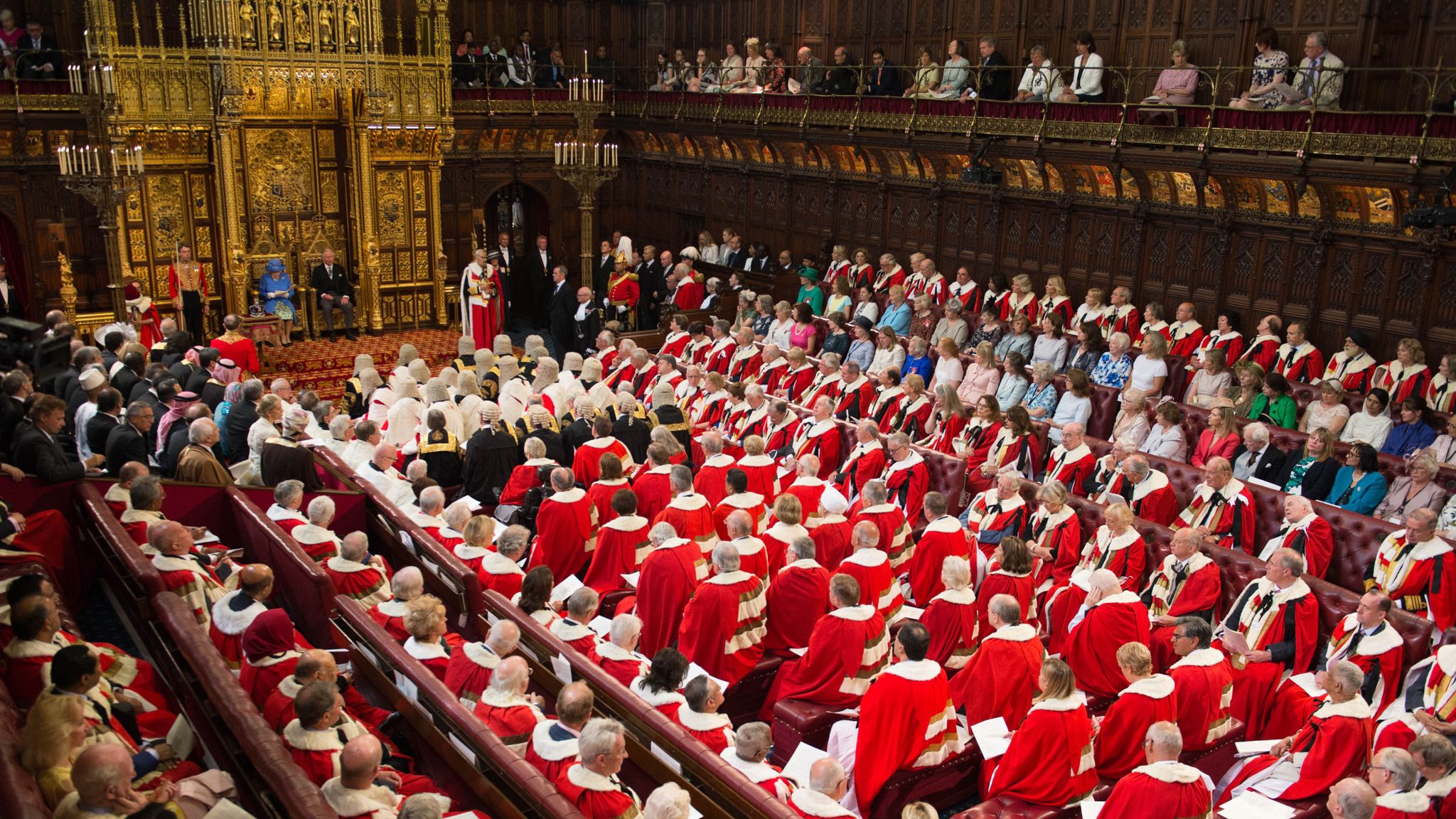
In his Spectator column this week, Toby suspects he might not be first in line for a peerage from Boris, despite a promising start.
Watching Lord Hannan of Kingsclere being introduced in the House of Lords on Monday was a bittersweet moment. On the one hand, I’m delighted for Dan. He is one of the heroes of Brexit, and his impromptu speech about Margaret Thatcher in the pub following her memorial service brought a tear to my eye (you can find his speech on YouTube). But on the other, I can’t help thinking: where’s my bloody peerage? I’ve edited this and that, co-founded four free schools, served on the boards of numerous charities and set up the Free Speech Union. I was the chief exec of a high-profile charity, for Christ’s sake, and my immediate predecessor got a CBE. I haven’t even got a lousy MBE. All the more surprising given that I must be one of the few potential recipients who wouldn’t denounce the British Empire as soon as he pocketed the gong.
I thought my elevation to the Lords might happen when Boris became Prime Minister. Up until that point, I’d given him more tobacco enemas than any other journalist in Fleet Street. (Blown smoke up his arse.) I even wrote a 5,000-word hagiography for an Australian magazine entitled “Cometh the hour, cometh the man“. Indeed, I laid on the oil so thick in that piece I’m now worried that when I’m standing in front of St Peter at the Pearly Gates he’s going to bring it up: “You did plenty of good works, you’ve been a decent husband and father and you always gave money to beggars. But on the other hand, you did write that 5,000-word piece about Boris in which you compared him to Nietzsche’s Übermensch. Sorry mate, it’s down you go.”
It was Boris who got my hopes up. In September of 2011, when he was Mayor of London, he opened the first free school I helped set up. He made quite a good joke as he cut the ribbon. ‘The Secretary of State for Education has given a new word to the English language,’ he said, referring to our mutual friend. “We give, they gave, he Gove – he Gove us this school.”
Afterwards, as he was getting into his chauffeur-driven car, he asked me if I’d like to be in the House of Lords. “We need more people like you,” he said.
“Don’t I have to give a million quid to the Tory party first?”
“Leave it with me,” he said, touching his nose.
Problem is, then came Covid.
Given how critical I’ve been of Boris since the outbreak of the coronavirus crisis, I’ve now abandoned all hope. Bloody typical of me. I’ve been a massive Boris backer since I campaigned for him to become president of the Oxford Union in 1985; then, 35 years later, when he’s finally in a position to reward his loyal supporters, I start attacking him in the press.
It was the same story with David Cameron. We were at Brasenose together and when he was still prime minister I told him about the shock I’d received when I returned for a college reunion and Dave Ramsden – a contemporary of ours and now deputy governor of the Bank of England – let slip he’d been given a knighthood. “Come on, Prime Minister,” I said. “You’ve got to stick me in the Lords so I can one-up him at the next Brase-nose gaudy.” He laughed, but I told him I was in deadly earnest. I thought there might be a sliver of a chance until we ended up on different sides during the EU referendum. Another bridge burnt.
Worth reading in full.











To join in with the discussion please make a donation to The Daily Sceptic.
Profanity and abuse will be removed and may lead to a permanent ban.